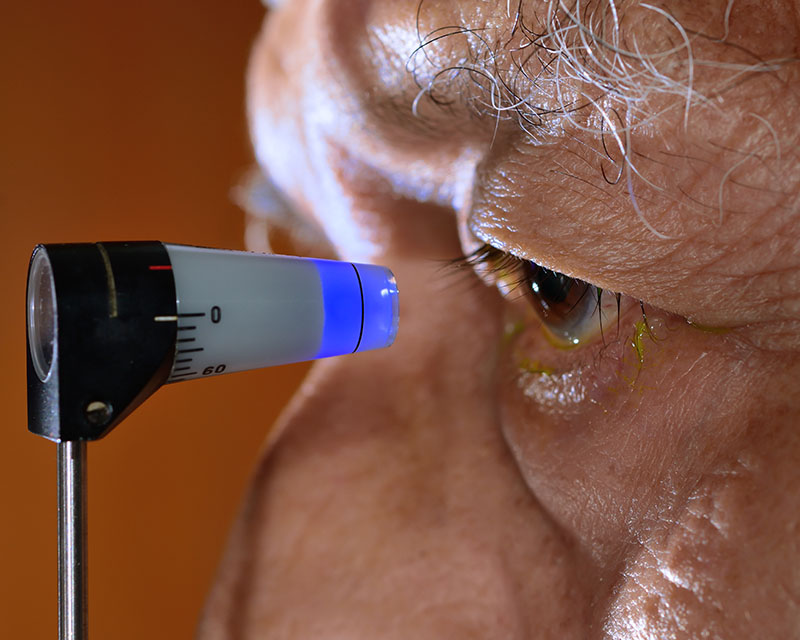
Selective Laser Trabeculoplasty, or SLT, is a form of laser surgery that is used to lower intraocular pressure in glaucoma.
Patients who have open-angle glaucoma (the drainage system in the front part of the eye is open) and need to lower their intraocular pressure (IOP) are eligible for the procedure. Your eye doctor will determine if you are a candidate.
Laser energy is applied to the drainage tissue in the eye. This starts a chemical and biological change in the tissue, resulting in better drainage of fluid through the drain and out of the eye. This eventually results in lowering of IOP. It may take 1-3 months for the results to appear.

The type of laser used has minimal heat energy absorption because it is only taken up by selective pigmented tissue in the eye. Sometimes it is referred to as a “cold laser.” Because of this, the procedure produces less scar tissue and has minimal pain.
One key aspect of SLT is a favorable side effect profile, even when compared with glaucoma medications. Post-operative inflammation is common but generally mild, and treated with observation, eye drops or an oral non-steroidal anti-inflammatory drug. There is approximately a 5% incidence of IOP elevation after laser, which can be managed by glaucoma medications and usually goes away after 24 hours.
SLT lowers the IOP by about 30% when used as initial therapy. This is comparable to the IOP lowering of the most powerful and commonly used class of glaucoma medication (prostaglandin analogs). This effect may be reduced if the patient is already on glaucoma medications.

The effect will generally last between 1-5 years, and in rare cases, longer than that. If it does not last at least 6-12 months, it is usually not considered successful.
If SLT is effective at lowering IOP, once it wears off over several years, the procedure can be repeated. The second treatment may not be as effective as the first and may not last as long. If SLT is not initially successful, repeat treatment is not likely to be effective. Alternatively, glaucoma medication can be used if the effects wears off over time. 8. What happens if it doesn’t work? If SLT fails to lower the IOP, then the glaucoma is treated by other means such as medications or conventional surgery. The laser does not affect the success of these other types of treatment.
Some patients can be controlled with just laser treatment. Others require additional IOP lowering and may therefore need to use glaucoma medication as well. Think of the SLT as equivalent to one glaucoma medication. Just as some patients will require more than one glaucoma medication to control their IOP, some may also require laser plus one or more glaucoma medications. It is important to remember that SLT is not a cure for glaucoma, just as medication and surgery are not. Whatever method is used to treat glaucoma, appropriate follow up and testing with your eye care professional is critical.